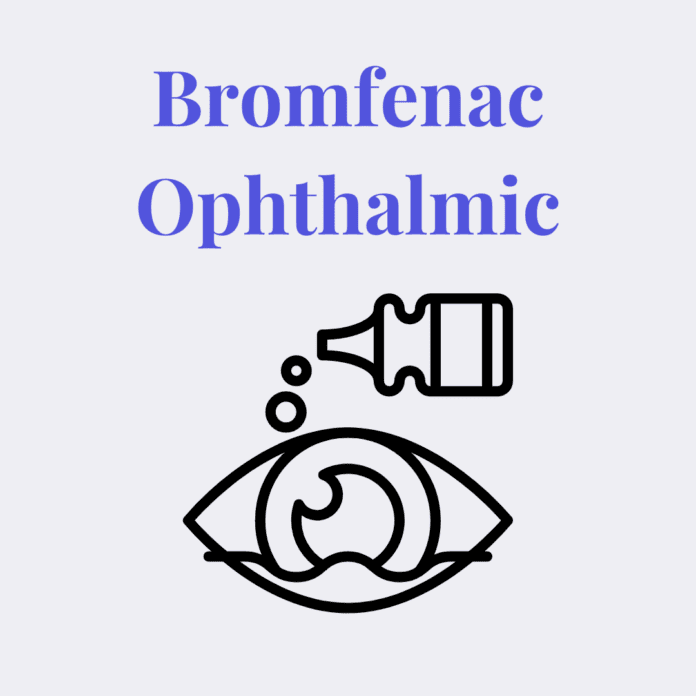Uses
Bromfenac ophthalmic is used to treat eye swelling and redness (inflammation) and pain that can occur after cataract surgery. Bromfenac ophthalmic is in a class of medications called nonsteroidal anti-inflammatory drugs (NSAIDs). It works by stopping the release of certain natural substances that cause pain and swelling.
Side Effects Of Bromfenac Ophthalmic
Bromfenac ophthalmic eye drops may cause side effects. Tell your doctor if any of these symptoms are severe or do not go away:
- stinging or burning of the eyes
- red or itchy eyes
- feeling that something is in the eye
- headache
Some side effects of bromfenac ophthalmic can be serious. If you experience any of these symptoms, stop using bromfenac eye drops and call your doctor immediately:
- redness or swelling of eyes, lips, tongue, or skin
- rash, hives, or other skin changes
- difficulty breathing or swallowing
- bleeding within the eye
- the sensitivity of your eyes to light
- eye pain
- blurry, cloudy, or blocked areas of vision
Warnings & Precautions
Before using bromfenac ophthalmic eye drops:
- tell your doctor and pharmacist if you are allergic to bromfenacophthalmic , aspirin other nonsteroidal anti-inflammatory drugs (NSAIDs), any other medications, sulfite or any of the ingredients in bromfenac eye drops. Ask your pharmacist for a list of the ingredients.
- tell your doctor and pharmacist what other prescription and nonprescription medications, vitamins, nutritional supplements, and herbal products you are taking or plan to take. Be sure to mention any of the following: anticoagulants (‘blood thinners’) such as warfarin (Coumadin); aspirin or other nonsteroidal anti-inflammatory drugs (NSAIDs) such as ibuprofen (Advil, Motrin, Midol) and naproxen (Aleve, Naprosyn);steroid products that are applied in the eyes such as dexamethasone (Maxidex, in Dexasporin, Maxitrol, Tobradex), difluprednate (Durezol), fluorometholone (Flarex, FML), loteprednol (Alrex, Lotemax, Zylet), and prednisolone (Omnipred, Pred Forte, Pred Mild, in Blephamide, Pred-G); (NSAIDs),.
- if you are using another eye drop medication, use the eye medications at least 5 minutes apart.
- tell your doctor if you have or have ever had diabetes, asthma, rheumatoid arthritis (arthritis caused by swelling of the lining of the joints), dry eye disease, or any eye problem other than cataracts, any condition that causes you to bleed easily, or if you recently had eye surgery on the same eye that is being operated on.
- tell your doctor if you wear contact lenses. You should remove your contact lenses before instilling bromfenac ophthalmic eye drops and wait at least 10 minutes after using the medication to replace your lenses.
- tell your doctor if you are pregnant, plan to become pregnant, or are breastfeeding.
- You should know that bromfenac ophthalmic eye drops may slow the healing of the eye after surgery. Call your doctor right away if your pain and swelling do not improve.
Dosage Of Bromfenac Ophthalmic
Keep all appointments with your doctor.
Do not let anyone else use your medication.
It is important for you to keep a written list of all of the prescription and nonprescription (over-the-counter) medicines you are taking, as well as any products such as vitamins, minerals, or other dietary supplements. You should bring this list with you each time you visit a doctor or if you are admitted to a hospital. It is also important information to carry with you in case of emergencies.
Other
Source
All information has been provided courtesy of MedLinePlus from the National Library of Medicine and from the FDA.



